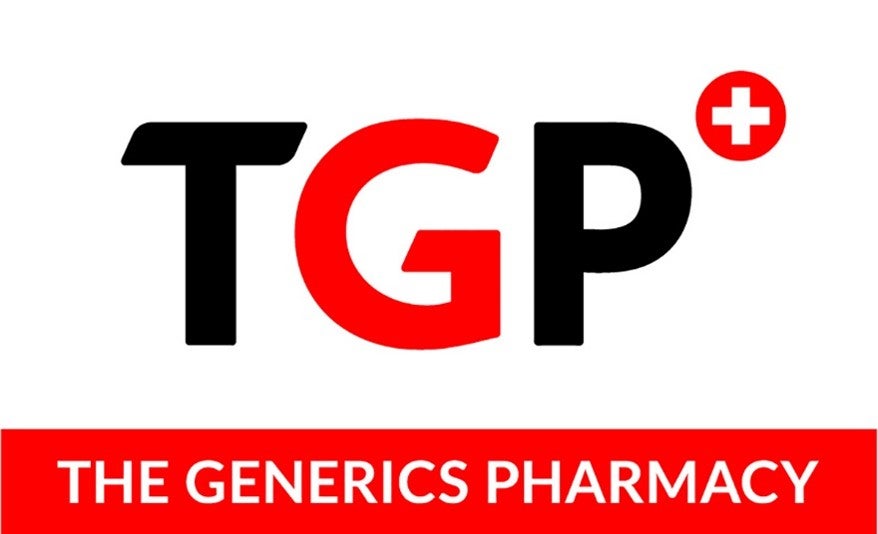Generic Drugs in India DR BEST Pharmaceuticals
11/02/2025 18:07

Further, Clause 1.5 of Indian Medical Council (Professional Conduct, Etiquette and Ethics) Regulations, 2002 prescribes that every physcian should prescribe drugs with generic names legibly and preferably in capital letters. Additionally, the erstwhile Medical Council of India (MCI) had issued Circulars vide which all the Registered Medical Practitioners have been directed to comply with the aforesaid provisions. You can trust Indiangenericprice for reliable access to specialized medications that are affordable and delivered worldwide.
Drug Resources
India is the largest provider of generic drugs globally with the Indian generics accounting for 20 % of global exports in terms of volume. The Vice President said that apart from being the world leader in generic medicines, India should promote Indian systems of Medicine. He asked young researchers to work towards standardizing and benchmarking Indian systems of medicine and establish the efficiency, validity and efficacy of these traditional medicines, using globally established experimental protocols. Moreover, the Directorate General of Health Services has directed all Central Government hospitals to prescribe generic medicines only. Similar instructions also have been issued to ‘prescribe drugs with generic name legibly’ to all CGHS Doctors and Wellness Centres. Big pharmaceutical corporations with patent monopolies were charging over $10,000 per patient per year for antiretrovirals (HIV medicines), thereby making treatment economically unviable for millions of patients in the developing world.
Lack of awareness
There is immense scope for technology, innovation and research in pharmaceuticals. Generic drugs export has been growing at a very impressive rate of around 24% per year for the last four years. Our extensive catalog includes specialized drugs that cater to serious conditions such as HIV, Hepatitis, Cancer, and more. We deliver medications worldwide, ensuring that patients from all corners of the globe receive the care they need.
Pradhan Mantri Bhartiya Janaushadhi Pariyojana
Pradhan Mantri Bhartiya Janaushadhi Kendra scheme ensures quality generic medicines available at affordable prices to all citizens. Under the scheme, dedicated outlets known as Janaushadhi Kendras are opened to provide generic medicines at affordable prices. By providing affordable medication options, generic medicines ensure that low-income individuals and underserved populations have access to necessary treatments, reducing healthcare disparities across the country. Generic medicines are produced after the patent on a branded drug expires, allowing multiple manufacturers to make the same drug.
- The government and the Pharma sector in unison have managed to effectively harness the power of Information technology to improve efficiency.
- We provide a wide range of specialty drugs, from anti-viral treatments to nephrology drugs, addressing complex medical needs.
- The Atharva veda is a treasure trove of knowledge and wisdom in the field of medicine.
- New molecules and new drugs will have to be discovered and treatment protocols will have to be continuously upgraded and updated.
- Pradhan Mantri Bhartiya Janaushadhi Kendra scheme ensures quality generic medicines available at affordable prices to all citizens.
- This has resulted in substantial savings to common man as prices of generic medicines being sold in the PMBJP Kendras is lower by 50% to 90% of the equivalent branded medicines.
- To address this issue government central government started Jan Aushadhi (Medicine for the masses) programme in 2008 with the objective of providing quality medicines at affordable prices.
Are generic medicines safe and effective?
The initiative aims to make essential medicines more accessible and affordable through resolute PMBJK outlets. The Jan Aushadhi initiative will make available quality drugs at affordable prices through dedicated stores selling generic medicines which are available at lesser prices but are equivalent in quality and efficacy as expensive branded drugs. Medicines in almost every therapeutic category are sold primarily as branded drugs, at disproportionately high prices.
Initiatives to support generics in India
- This is particularly important in a diverse country like India, where disparities in access to healthcare can be significant.
- With the vision to provide quality generic medicines to all citizens, the government’s Pradhan Mantri Bhartiya Janaushadhi Pariyojana brings this concept to reality.
- Generic drugs are easily available across India, especially with the increasing number of Jan Aushadhi stores in rural and urban areas.
- It is up to you to establish the efficiency, validity and efficacy of these traditional medicines, using globally established experimental protocols.
- We may better appreciate their vital function in the healthcare system if we are aware of their advantages, difficulties, and legal environment.
- Saying that pharmaceuticals was a priority area for Government, Shri Naidu stressed the need to further harness the potential of the sector by use of technology, innovation and research.
- New healthcare challenges are emerging every day, especially with the alarming rise in the number of non communicable and lifestyle diseases and cancers.
- This initiative aimed to promote the use of affordable generic medicines by establishing Jan Aushadhi Kendras (stores) across India, where patients could purchase high-quality generic medicines at significantly lower prices than branded drugs.
Our support team works tirelessly to assist patients and healthcare providers with their medication requirements. In 2005, India adopted a strict medicines patent law that, while allowing patent protection for new pharmaceutical pazopanib price in mexico compounds, makes it tougher to get a patent on new forms of existing medicines. Governments of developing countries have also initiated HIV treatment programmes using generically produced medicines from India.
What healthcare information does Medkart Pharmacy provide?
It is quite heartening to note that the Pharma sector is out-performing most other sectors in achieving consistently high growth. The Pharma industry has posted a robust, double-digit growth over the last few years. The industry was worth US $36.7 Billion in 2017 and is projected to grow to US $55 Billion by 2020. The Atharva veda is a treasure trove of knowledge and wisdom in the field of medicine. It is clear that since the ancient times India had a very systematic, scientific and rational approach to the treatment of diseases. I have been buying prostate cancer medicine Abiraterone for my dad regularly with them.
Lack of awareness
Indian pharmaceutical companies started exporting generic drugs to developing countries that were grappling with the high cost of healthcare. The country earned the title of the “pharmacy of the developing world”, providing essential medicines at low prices to countries in Africa, Asia, and Latin America. In recent years, generic medicines in India have emerged as a powerful tool in making healthcare more affordable and accessible to millions of people. With rising healthcare costs, the availability of generic drugs has provided relief to patients by offering low-cost alternatives without compromising on quality. This article explores the significance of generic medicines in India, their role in the healthcare system, and why they are key to reducing out-of-pocket expenditure on healthcare. Pradhan Mantri Bhartiya Janaushadhi Pariyojana (PMBJP) is a campaign launched by the Department of Pharmaceuticals to provide quality medicines at affordable prices to the masses.
Generic Medicines in India: A Revolution in Affordable Healthcare
Under the National Pharmaceutical Pricing Policy, as on December 15, 2016, ceiling price of 853 formulations are under price control. It has also introduced a range of fiscal incentives to promote domestic manufacturing, including the reduction of inverted duty structure and basic customs duty. Pharmaceuticals is one of the fastest growing contributors to “Make in India” campaign since its inception. India also has a large pool of talented scientists and engineers who have the potential to lead the industry ahead to greater heights.
Where can I buy generic medicines in India?
With the vision to provide quality generic medicines to all citizens, the government’s Pradhan Mantri Bhartiya Janaushadhi Pariyojana brings this concept to reality. Out of Pocket expenditure on medicines constitutes more than 50% of healthcare expenditure in India. The poor are most affected as branded medicines are expensive and treatments involving the use of such medicines pushes them further into poverty.
- Indian companies, particularly Cipla, gained international recognition by producing affordable generic antiretroviral (ARV) drugs to treat HIV/AIDS, which significantly lowered the cost of treatment in Africa and other developing regions.
- This public health approach to setting strict patent standards is in line with international trade rules and encourages timely entry of affordable generics into the market, driving prices down.
- From legislative changes in the 1970s to the expansion of the global generics market, India’s pharmaceutical industry has grown into a powerhouse.
- By providing affordable medication options, generic medicines ensure that low-income individuals and underserved populations have access to necessary treatments, reducing healthcare disparities across the country.
- With rising healthcare costs, the availability of generic drugs has provided relief to patients by offering low-cost alternatives without compromising on quality.
- You can purchase generic medicines at Jan Aushadhi Kendras (government-run stores) and most pharmacies across India.
There are more than 700 medicines; more than 150 surgicals and consumables are available at affordable prices for all at more than 4000 ‘Jan Aushadi Kedras’ across the nation. ‘Pharma Jan Samadhan’, a customer grievances redressal system was launched and a mobile application – ‘Pharma Sahi Daam’ that provides real-time information to consumers on prices of Scheduled/Non-scheduled medicines has also been introduced. Our medications are sourced from Indian certified manufacturers and meet global regulatory standards. We help you to access high quality generic medicine and overcome financial barriers. How the law works is borne out of the patent decision in 2005 which rejected the Swiss pharmaceutical company Novartis’ attempt to patent the salt/crystalline form of ‘Imatinib,’ a life saving medicine for treating chronic myeloid leukemia.
To address this issue government central government started Jan Aushadhi (Medicine for the masses) programme in 2008 with the objective of providing quality medicines at affordable prices. Despite their potential to make healthcare affordable and accessible, generic medicines in India face multiple challenges. Addressing issues related to quality assurance, regulatory enforcement, public awareness, and the perception of generics is essential for improving their acceptance. By overcoming these obstacles, India can better harness the power of generic drugs to benefit its healthcare system and ensure equitable access to essential medicines. By the 1990s, India had become one of the largest suppliers of generic medicines globally.
Many patients are unaware that generic medicines contain the same active ingredients as branded drugs and are equally effective. Most people worry about the quality and effectiveness of generic medicines because generic drugs are not as costly as compared to branded drugs. But the quality of the generic drugs is never compromised.These are cost-effective only as research and development, and drug discovery costs are not involved in the case of generic drugs.
Jan Aushadhi and other Generic Medicine initiatives in India
These medicines are available through more than 8,600 PMBJKs functioning across the country. Though the active ingredients are the same, generics often come with different packaging, branding, or labeling compared to the original drug. New healthcare challenges are emerging every day, especially with the alarming rise in the number of non communicable and lifestyle diseases and cancers. I urge young researchers to work towards standardizing and benchmarking Indian systems of medicine. It is up to you to establish the efficiency, validity and efficacy of these traditional medicines, using globally established experimental protocols. It is my ambition that along with being the world leader in generic medicines, we should also promote Indian systems of Medicine.
It can depend on the clinical data presented by the innovator’s company for the safety profile of the medicine. By offering affordable and accessible healthcare options, generic medicines play a critical role in lowering healthcare costs while ensuring high standards of safety and effectiveness. This law fostered the growth of a strong domestic pharmaceutical industry focused on producing affordable generic drugs. It enabled Indian companies to manufacture medicines at much lower costs, without infringing on patents held by multinational corporations. Before the 1970s, India’s pharmaceutical market was dominated by multinational corporations, which produced and sold branded medicines at high prices. The Indian pharmaceutical industry was relatively underdeveloped, and most medicines, especially life-saving ones, were imported, making them inaccessible to a large part of the population due to high costs.

It is a common tactic by which the pharmaceutical industry extends their monopoly on drugs beyond the original patent’s 20 years. Long monopoly of a single company in the US keeps prices high because generic competition is blocked. This problem gets further aggravated as almost 80% of expenditure on health care is borne by the patients themselves.
Newly Launched Generic Medicine
Moreover, it is easier to get generic medicines directly from online pharmacy 24/7 or in a nearby chemist shop. The generics prove to be a great alternative to branded medicines as they are bioequivalent or identical to branded drugs with comparable therapeutic action. Along with no compromise on quality, it is also cost-effective, as the cost of research and development and drug discovery is not included in the case of generic drugs.
Generic medicines in India must adhere to the same regulatory standards as branded drugs. The Central Drugs Standard Control Organization (CDSCO) oversees the approval and regulation of generic medicines to ensure they meet high standards of safety, efficacy, and quality. This regulatory oversight helps maintain public trust in generic drugs and ensures that they are as effective as their branded counterparts.
From legislative changes in the 1970s to the expansion of the global generics market, India’s pharmaceutical industry has grown into a powerhouse. Today, India stands as a leader in the global generic drug market, providing life-saving medicines to millions of people worldwide, while continuing to be a vital player in making healthcare affordable for all. Yet, the country’s marginalised populations have limited access to medicines as branded medicines are sold at significantly higher prices than their unbranded generic equivalents, despite being identical in the therapeutic value. Therefore, there is an urgent need to ensure the availability of cheaper generics to citizens; this is in the best interest of these populations.
Additionally, healthcare professionals should be trained on the efficacy of generics to shift prescribing practices. Once a drug patent expires, multiple pharmaceutical companies can produce and sell the generic version, leading to increased competition and lower prices for consumers. Providing essential drugs and medicines at cost-effective prices is the key focus of Department of Pharmaceuticals, Ministry of Chemicals and Fertilizers. Under free drug initiatve of National Health Mission (NHM), support is provided for provision of essential generic drugs free of cost in public health facilities. Indiangenericprice ensures that all our medications are obtained from certified manufacturers, meeting strict global safety and efficacy guidelines. We aim to make advanced medications affordable and accessible for patients everywhere.
This leads to lower costs because generic manufacturers do not incur the high expenses of research and marketing. As of July 2024, ~13,113 Pradhan Mantri Bhartiya Janaushadhi Pariyojana Kendras were operational in India. Under the PMBJP Kendras, a medicine is priced on the principle of a maximum of 50% of the average price of the top three branded medicines. Therefore, the cost of Jan Aushadhi medicines is cheaper by ~50% and in some cases, by 80-90% of the market price for branded medicines. Rural health programmes, lifesaving drugs and preventive vaccines should also receive attention from policy makers and Pharma companies alike.
Developing countries across the world face several challenges, key among which is providing their people with affordable medicines of high-quality. You can purchase generic medicines at Jan Aushadhi Kendras (government-run stores) and most pharmacies across India. These stores offer a variety of affordable generic alternatives for common medicines.

Such patents are routinely granted in the US and other countries, but India chose to prioritise access to medicines over the business interests of the pharmaceutical industry. Yes, generic medicines are available for a wide range of diseases, including chronic conditions like diabetes, hypertension, and infectious diseases. Branded drugs are developed after years of research and clinical trials, making the original manufacturer the exclusive seller for a specific time through a patent.
This makes them more accessible to patients and healthcare providers across different regions. The scheme was a major milestone in making healthcare accessible to all citizens, especially in rural and underprivileged areas. PMJAY also helped raise awareness about the benefits of generic medicines, countering the perception that generics are of lower quality. The AIDS crisis in the late 1990s further highlighted India’s role in the global healthcare system. Indian companies, particularly Cipla, gained international recognition by producing affordable generic antiretroviral (ARV) drugs to treat HIV/AIDS, which significantly lowered the cost of treatment in Africa and other developing regions.
ConclusionIn conclusion, the PMBJP scheme has been instrumental in making quality generic medicines available and affordable to all sections of society, especially the economically weaker sections in India. The scheme has been successful in increasing the accessibility of medicines to the masses and has helped in reducing healthcare costs for individuals and the government. However, there are still challenges that need to be addressed, such as ensuring the availability and accessibility of medicines in remote areas. The potential of the PMBJP to expand and cover more medicines and medical devices is promising, and it can play a crucial role in achieving the goal of universal health coverage in India. AbstractThis article provides an overview of the Pradhan Mantri Bhartiya Janaushadhi Pariyojana (PMBJP) scheme in India. The PMBJP scheme aims to make quality generic medicines available and affordable to all sections of society, especially the economically weaker sections.










